


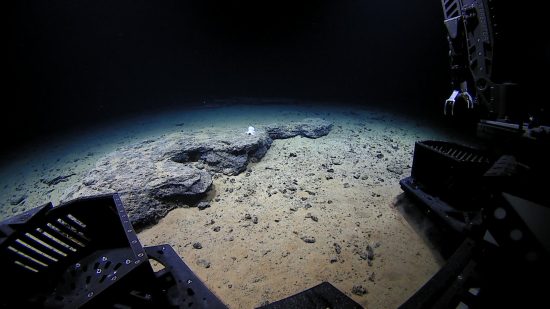
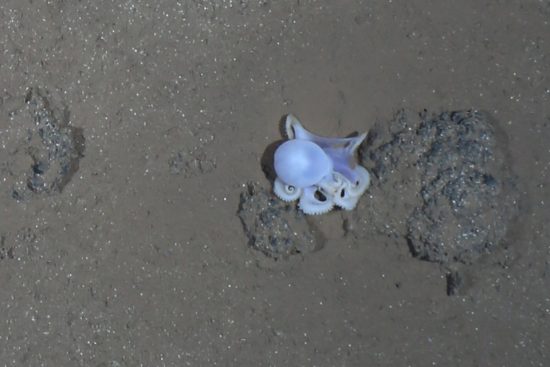
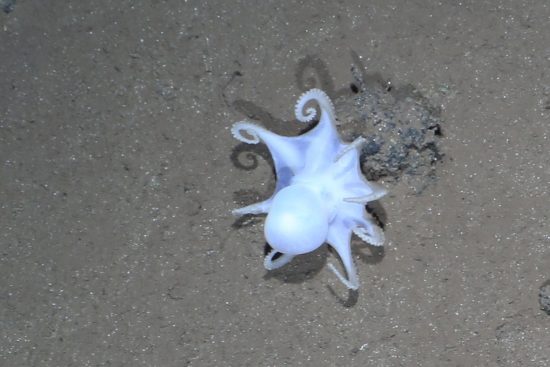
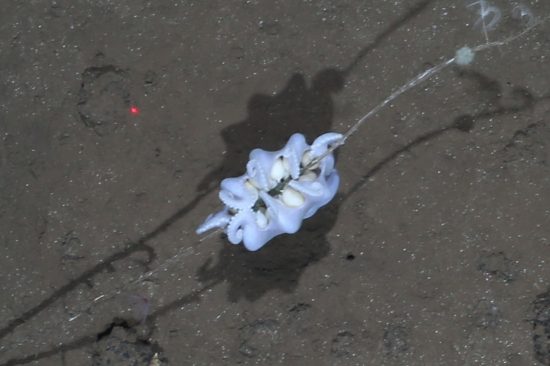
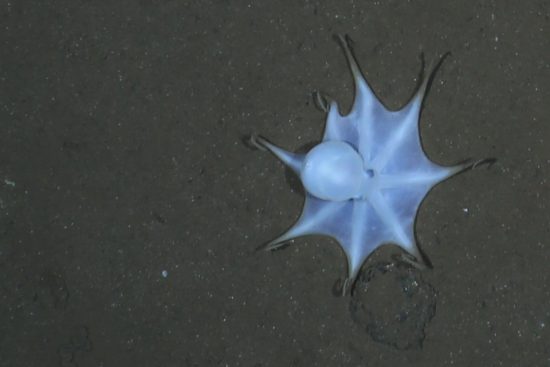

Casper the octopus (and counterparts) threatened by deep-sea mining
For deep-sea octopuses, manganese nodules on the seabed are an
important breeding ground. This is because they deposit their eggs onto
sponges that grow on manganese nodules, according to a study by a
German-American team of biologists published in the current issue of
Current Biology.
Unfortunately, this dependence on the manganese
nodules does not bode well as the nodules are sought after by industry;
thus, any collection of manganese nodules must be preceded by thorough
investigations into the possible environmental consequences.
Remember Casper? Not the fictional friendly ghost, but the tiny
deep-sea octopus (Octopoda, subgroup: Incirrina) that became a social
media star several days after a video of it was uploaded on YouTube
this February. The US dive robot Deep Discovery had discovered it off
Necker Island in Hawaii at a depth of 4,290 metres (as we had reported
here.
Researchers are now sharing the extensive wealth of knowledge about
life in the deep sea and the ecological importance of manganese nodules
(where Casper had been found), based on their observations of Casper
and 28 other observations of similar octopuses elsewhere in the Pacific.
Guarding their eggs at record depth of more than 4,000 metres
At 4,290 metres depth, Casper's appearance represents the greatest
depth at which such finless octopuses had been observed. Just six
months earlier, researchers at the Alfred Wegener Institute, GEOMAR,
Max Planck Institute for Marine Microbiology, and Centre for Marine
Environmental Sciences (MARUM) had filmed and photographed other
specimens belonging to a similar or related species at 4,120 metres
depth, in the Peru Basin in southeastern Pacific Ocean.
The diving robot
ROV KIEL 6000 had been used for the recording, using a towed camera
system (AWI-OFOS).
Where some octopuses lay their eggs
Two octopuses had been observed using guarding their eggs. “At a depth
of 4,000 metres, these animals had deposited their eggs onto the stems
of dead sponges, which in turn had grown on manganese nodules. The
nodules served as the only anchoring point for the sponges on the
otherwise very muddy seafloor. This means that without the manganese
nodules, the sponges would not have been able to live in this spot, and
without sponges the octopuses would not have found a place to lay their
eggs,” said lead author Dr Autun Purser, from AWI.
Even when not seeking out a safe place to lay their eggs, octopuses can
still be found near areas with manganese nodules and rocky protusions.
“The video footage indicates that the animals have cleaned the seabed
around the nodules. It probably looks like that because the animals
have been filmed using their arms to dig into the sediment around the
nodules, probably in search for food,” said co-author Henk-Jan Hoving,
of the GEOMAR Helmholtz Centre for Ocean Research.
From the DISCOL experiment in the late 1980s, we discovered that many
deep-sea animals required the presence of manganese nodules in their
habitat. In the experiment, after manganese nodules were removed from
an area in the Peru Basin, the community of animals, including sponges,
that had been attached to the seafloor subsequently almost fully
collapsed. When scientists returned to the same area 26 years later,
many of the animal populations had not yet recovered. We had reported
on this in a previous edition.
“Our new observations show that we have to know about the behaviour of
deep-sea animals and the specific way in which they adapt to their
habitat in order to draw up sustainable protective and usage concepts,”
said AWI researcher Antje Boetius, who had headed the previous
expedition to the Peru Basin.
Because Casper and his counterparts (as well as similar species) lay
very few eggs and have very long reproductive cycles, they are under
threat. The offspring of octopuses that spawn in waters at three
degrees Celsius only hatch after four years. However, at the bottom of
the Peru Basin, the temperature is just 1.5 degrees Celsius. This has
led researchers to conclude that their eggs would need many years
before they fully developed. Any disturbance during this period would
have serious implications on the developing embryo.
Link to the study
Video
 Herbert
Herbert 22nd December 2016
22nd December 2016